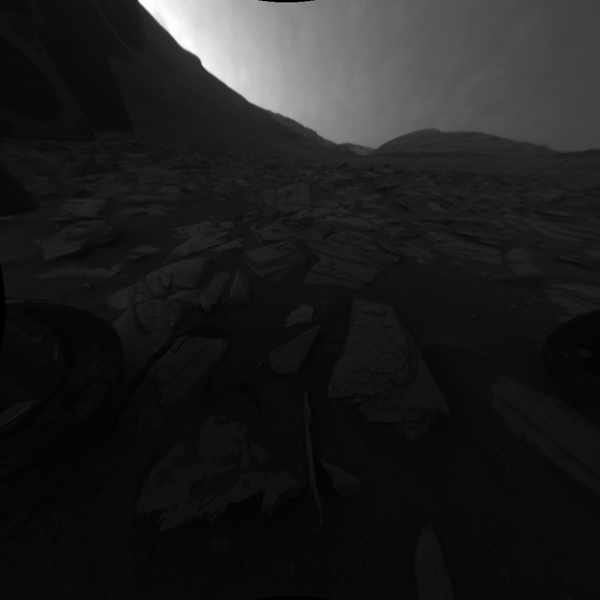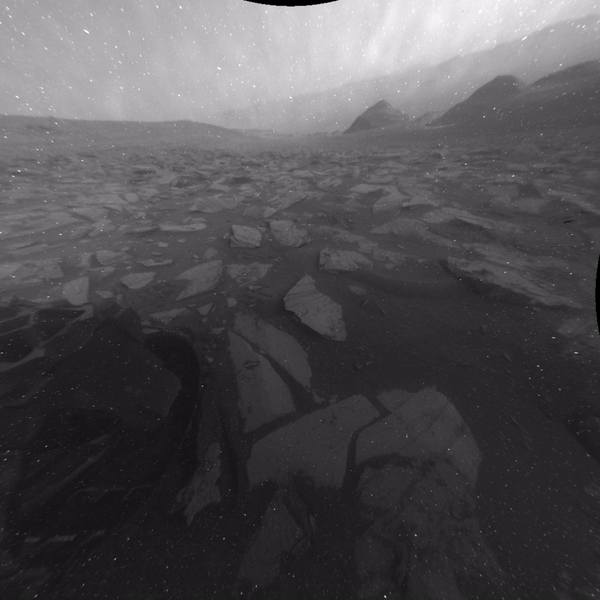ISS Astronauts redefine ‘The Right Stuff’ for the modern era
What does it take to be selected for space missions? Two astronauts aboard the International Space Station reveal the key crucial characteristics that make up "the right stuff."
Newly released images from NASA's Mars Curiosity Rover show a 12-hour time-lapse on the red planet from sunrise to sunset.
NASA's Curiosity rover was launched from NASA's Kennedy Space Center in Cape Canaveral, Florida, in November 2011 and landed on Mars in August 2012. Since then, the rover has traveled nearly 20 miles on the red planet, capturing over 1.1 million images. The mission of the Curiosity rover is to identify whether Gale Crater, an area thought to be a dried-up lake, was habitable in the distant past.

A self-portrait of NASA's Curiosity Mars rover shows the vehicle at "Namib Dune," where the rover's activities included scuffing into the dune with a wheel and scooping samples of sand for laboratory analysis. (Credit: NASA/JPL-CALTECH/MSSS / HANDOUT)
Scientists hoped that capturing a time-lapse from Mars could reveal cloud or dust devil activity, leading to insights about the weather on the planet. The images were taken while the rover was parked on Nov. 8, 2023, just over 4,000 sols – Martian days – into the mission.
Though the images did not reveal any weather anomalies, scientists did get a detailed look at the planet's surface.
ISS ASTRONAUTS EXPLAIN WHAT IS REQUIRED TO ‘HAVE THE RIGHT STUFF’ FOR SPACE TRAVEL:
WATCH MORE FOX NEWS DIGITAL ORIGINALS HERE
The images were captured with Curiosity's black-and-white Hazard-Avoidance Cameras, called Hazcams. NASA scientists use Hazcams to navigate around rocks, debris and other threats.
The first video shows images from the front Hazcam, revealing a view of a valley on Mount Sharp, a mountain at the center of Gale Crater. Curiosity has been ascending the 3-mile tall mountain since 2014, taking soil samples along the way for analysis.
Scientists hope that the samples will give insights into whether the planet is capable of supporting microbial life. So far, the rover has collected 39 samples, according to NASA.

A time-lapse of the Martian surface from 5:30 a.m. to 5:30 p.m local time. (Credits: NASA/JPL-Caltech)
NASA PLANS TO BUILD A SUBDIVISION OF HOMES ON THE MOON, AND IT MAY BE SOONER THAN YOU THINK
Additionally, as the sky brightens in the first video, the shadow of the rover and its 7-foot robotic arm can be seen.
The rover is 10 feet long, 9 feet wide and 7 feet tall, making it about the size of a small SUV.
In the second video, the rear Hazcam reveals a sight down the slopes of Mount Sharp to the Gale Crater.

The Curiosity rovers back Hazcam showing Mount Sharp and the distant floor of Gale Crater. (Credits: NASA/JPL-Caltech)
CLICK HERE TO GET THE FOX NEWS APP
The speckled appearance of the images, especially from the rear-facing Hazcam, is a result of 11 years of Martian dust accumulating on the cameras.
In the 17th frame of backward-facing time-lapse, a small black speck appears briefly before disappearing, which is a result of a cosmic ray hitting the camera sensor, according to NASA.



